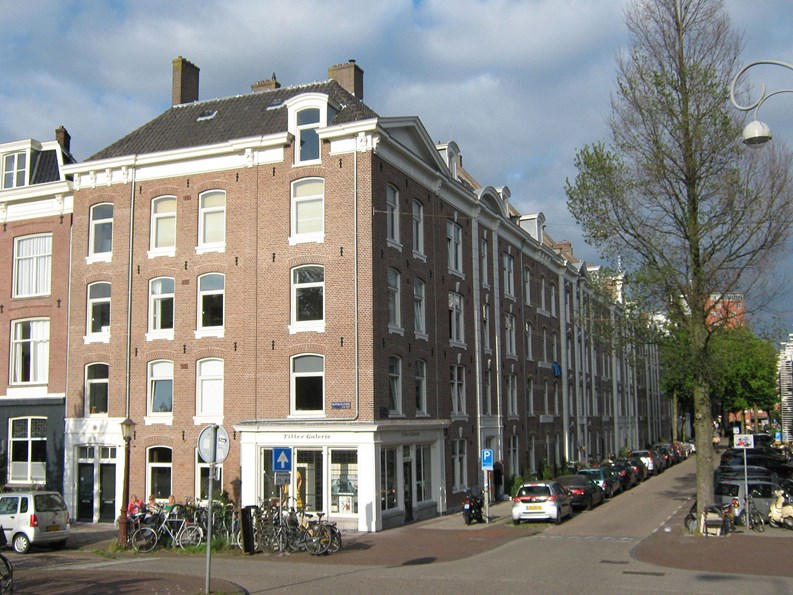It’s cheaper for two families to pool resources and share a house than for the same two families to buy two houses. This underlying concept has been around since people starting building houses. As a report by the National Cooperative Law Center points out, “Records of shared-ownership housing have been recorded throughout history since the days of Babylon, where documents describe two owners sharing separate floors of a house,” and from there to the Byzantine Empire, where the Digest of the Emperor Justinian “refers to separate ownership of a house but shared ownership of a common roof.”
Historic Roots
In 1769, seven years before the American and 20 years before the French Revolution, a group of weavers in Scotland banded together to share expenses related to their trade. By 1844, the concepts were formalized in the so-called Rochdale Principles, which call for open membership, democratic rule, and political and religious neutrality, among other tenets. In time, the cooperative model was applied to multifamily housing. Because of the Industrial Revolution, more and more people were living in cities, and the only two available options for housing were either owning, or renting. Owning was far beyond the means of most newcomers to the urban landscape; paying extortionate rent for a tiny apartment in a squalid tenement also lacked appeal. Cooperative housing provided a middle ground—a way for people who were not fabulously wealthy to sidestep landlords and have a say in how their homes were managed and maintained.
“Cooperatives not only in housing, but across the sector, are very much a British phenomenon,” says Sorcha Edwards, Secretary General of Housing Europe, The European Federation for Public, Cooperative and Social Housing, in Brussels, Belgium. “And from then, the Austrian experience is really when you start to have a growth of middle class, in the mid 1800’s. People who didn’t want to have a landlord, but also didn’t want the responsibility of having their own property.” She adds, “Also, in high-density situations, having your own property is less practical.”
This radical housing concept came to New York with the enormous influx of immigrants in the late 19th and early 20th century. In 1918, the Finnish Home Building Association was established in Brooklyn by Finnish artisans—the city’s first true co-op. The rest of the century saw thousands of co-ops set up in New York.
“It’s a model that we are very much trying to promote” in Europe, says Edwards. “We have a lot of social rental housing within our membership, but what we really promote is a diverse housing system….You need the right regulatory framework to have lots of different types of housing.” The benefits go beyond money. “You have a lot more feeling of ownership,” she says. In running the building, the residents are given a voice, and the cooperatives usually have been not for profit, so again it adds to the diversity.”
While New York City is home to the highest concentration of co-ops and condos in the U.S., it's not the only place where the housing model exists. According to Scott Jackson, program manager with the Co-operative Housing Federation of Canada, the trend is very much alive in other countries—mostly in Western Europe, where nearly 10 percent of the population lives in some type of cooperative housing—but throughout the rest of the developed and developing world as well.
And in Chicago, the housing cooperative model still flourishes, mostly in the downtown and along Lake Shore Drive. Some of the finest pre-war and Art Deco buildings in Chicago’s Gold Coast, Lincoln Park, Lakeview and Hyde Park neighborhoods are co-ops, which predated condominiums as the earliest form of apartment ownership, primarily for the wealthiest of families, according to Chicago real estate broker Jennifer Ames. She notes that in the early days, co-ops were popular with those rich landowners because of their ownership structure.
“Each building had admission requirements, much like private country clubs,” Ames says. “Their criteria included financial capacity and social stature. Because they were corporations, co-ops were exempt from fair housing rules and were able to discriminate. Bank financing was not available; purchasers paid for their shares of stock in cash.”
Other co-op models also exist. There also are cooperative-governed buildings with more of a communal style living arrangement where residents rent their units and share interests such as social justice, yoga, sustainability and vegetarian cooking. Chicago zoning laws make it illegal for large groups of unrelated residents to live together; however, there are pockets of co-op-style communities centered around things like student housing and food and agricultural production.
Canada
“In Canada, the earliest housing co-ops were student housing,” says Jackson. “There were also various initiatives started up by churches, particularly in the provinces of Quebec and in the Maritimes. The earliest Canadian housing co-op started during the Depression era. It was initiated by an activist Catholic priest in northern Nova Scotia”—not at all a densely populated urban center like New York. “Originally it was sort of a self-help kind of situation, and the earliest [co-op shareholders] would be workers in some town or city trying to help each other out to get private home ownership.”
The underlying concept was the same as it had been in New York: there was great power in pooled resources, if organized well. By the 1960s, the success of these first programs convinced the governments at both at the provincial and federal level to incentivize the model and promote it more widely. “It was at that point that it started taking on a multi-unit collective ownership kind of model,” says Jackson. “There were several programs, and the real heyday of co-op development happened in the 1970s and 80s when thousands of co-ops were set up. And now we have close to a quarter of a million people living in co-ops.”
Aside from the obvious financial incentives that come with pooling resources, Canadian co-ops have benefited from governmental subsidy programs. “Most of the people in a housing co-op would pay a break-even rent or housing charge,” Jackson says, “which would typically be somewhere around 20 to 30 percent lower than the prevailing market, depending on what part of the country you’re in. And around a quarter of the people living in the building would receive a direct government subsidy that is dispensed via the co-op.”
The United Kingdom
The first cooperatives in the UK were commercial enterprises, and that continues to be the focus to the present day, says Dominic Mills, communications and marketing officer with Cooperatives UK in Manchester. “Historically because of how co-ops developed in the UK, a large association is with retail societies. Our biggest co-op, which is Cooperative Group, is known largely for its supermarkets and its funeral division.” But cooperative housing continues to thrive in Great Britain. “It’s not just about retail, but actually it’s a business model that transcends all sorts of different sectors,” Mills says.
Spain and Italy
Spain was hard hit by the recent Great Recession, to the point where there was some fear in the EU that the country would default. This impacted the housing market. “In Spain, you really had a failure of the market, and you have hundreds of thousands of people evicted because of the mess that was the mortgage policy,” Edwards says. “And the same in the US, so a lot of what you call foreclosures, a lot of evictions in Spain.” This has led to renewed interest in cooperative housing in that country.
“In Italy, there’s a lack of government support” for cooperative housing development, Edwards says, although there are a good number of co-ops there. “The sector is still suffering, but the cooperative housing sector is [nevertheless] a very, very strong sector, with a mix of different properties. [There's] a lot of ownership, but also rental cooperatives that are providing rental housing, just as a general indicator of the state of the sector.”
Eastern Europe
In many ways, the specter of their shared Communist past still haunts the nations of Eastern Europe, and makes many citizens—particularly members of older generations—understandably suspicious of any broad entity taking away private property. Cooperative housing, which is positively Marxist in its concept, can be a tough sell, depending on the audience.
“Broadly speaking, in central and eastern Europe there's very much reduced government support” for housing co-ops, Edwards explains. “In what may be a reaction to the years under communism, some cooperatives...stress that they are older than communism – that they’ve been in existence much longer. But there is this association [with communism] and a lack of trust in, let’s say, a ‘higher power.' And [the cooperative housing model] does somehow get mixed up with that, so in general it’s not the most favored model in Eastern Europe. In Poland for example, there’s a push to move cooperatives into private ownership. So they’re really battling to keep property within cooperative ownership.”
Africa
In addition to his work in North America, Jackson is president of Rooftops Canada, a charity that does international development work on behalf of Canada’s co-op and non-profit housing organizations.
“Although we help them on their own terms and goals—most recently specializing in housing microfinance—the majority of our works has been with co-op housing” says Jackson, “most recently in East African countries such as Kenya, Tanzania and Zimbabwe. In these countries, which I’ve visited to see the results, I could tell you stories that would bring tears to your eyes for the amount of hardship overcome thanks to co-op housing. In Egypt, a huge number of people live in co-ops. What strikes me in this context is that the co-operative model as applied to the need for secure, safe affordable housing is incredibly flexible. It can help wealthy equity co-op members in New York City, and it can help someone in the slums of Nairobi to own their first real home. It's truly incredible.”
United States
In the U.S., words like socialist, communist, collectivist, and cooperative tend to have negative connotations among much of the population—this despite the fact that programs like Social Security and Medicare, as well as the military, are also socialist constructs. Here, tax policies have since the end of the Second World War incentivized single-family home ownership. But cooperative housing may well be the wave of the future.
“I think both the U.S. and Canada could benefit from more cooperative housing,” Jackson says. “There are other parts of the world where co-op housing is a much more common alternative, and when you look at the affordable housing pressures that North American cities like New York and Vancouver, where I live, are facing, there are just incredible challenges to being able to have a diverse population,” he says. “I’m concerned that my daughter will never be able to find affordable rental housing, let alone be able to buy a home in her hometown.” Cooperative housing is one possible solution to what will be a mounting housing problem in major cities going forward. n
Greg Olear is a freelance writer and a frequent contributor to The Cooperator.







Leave a Comment